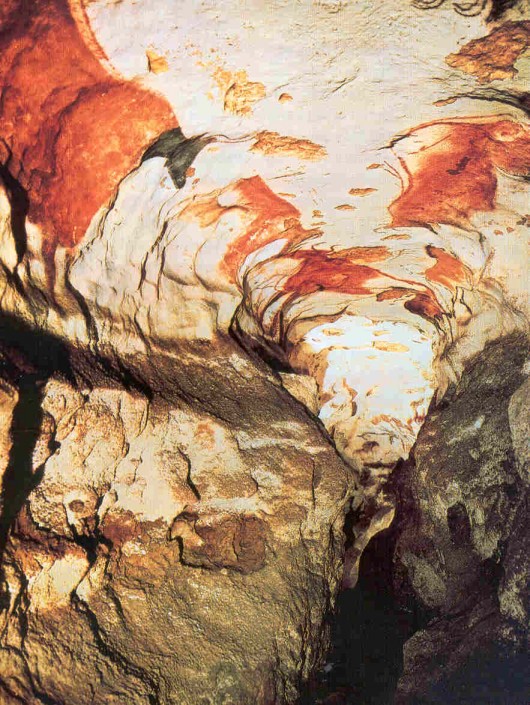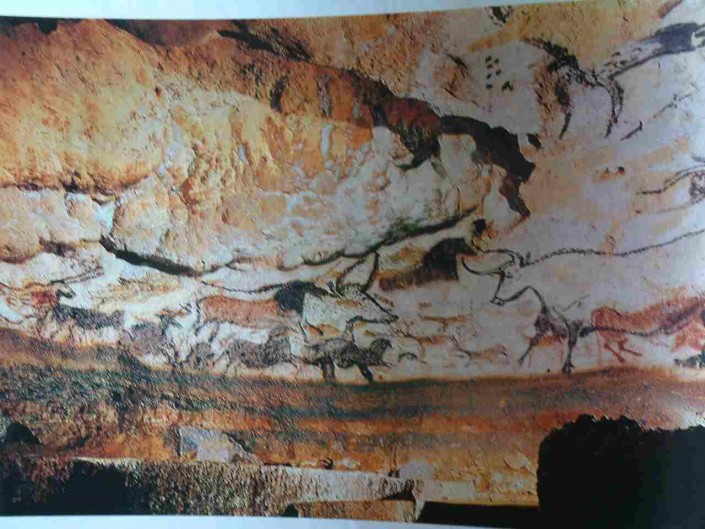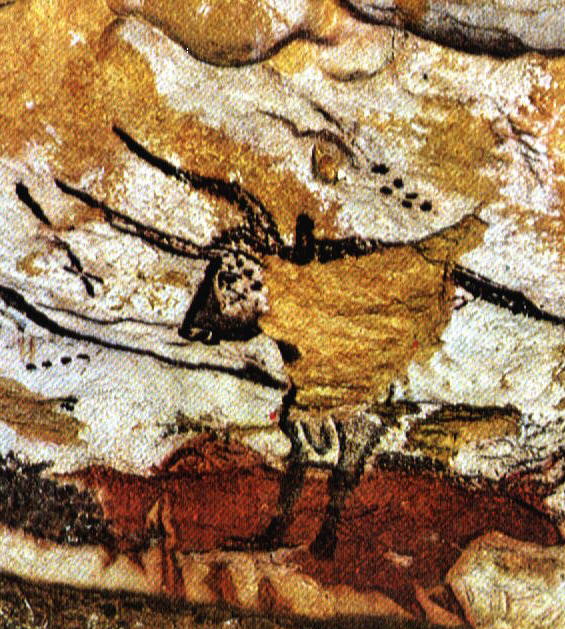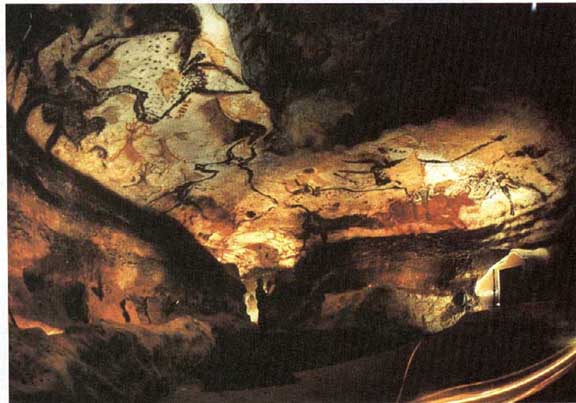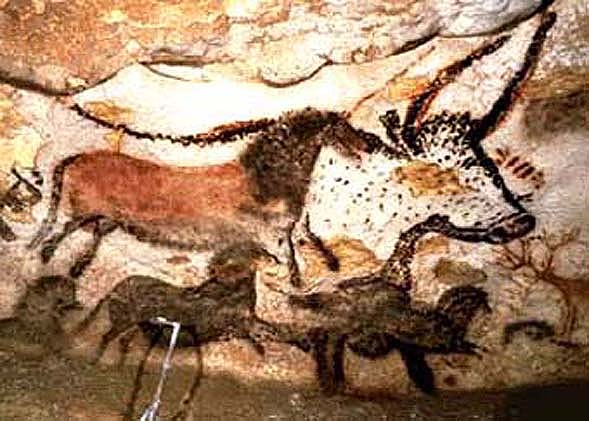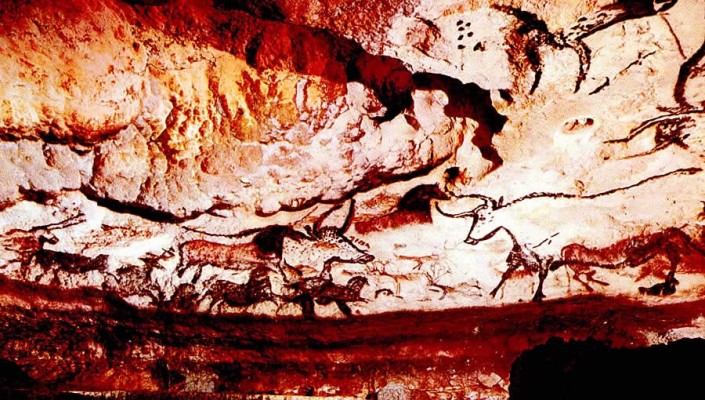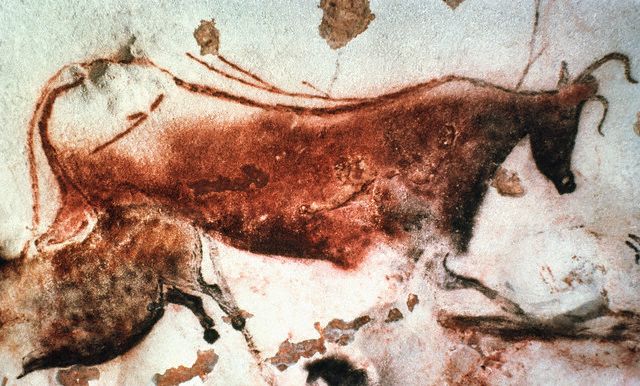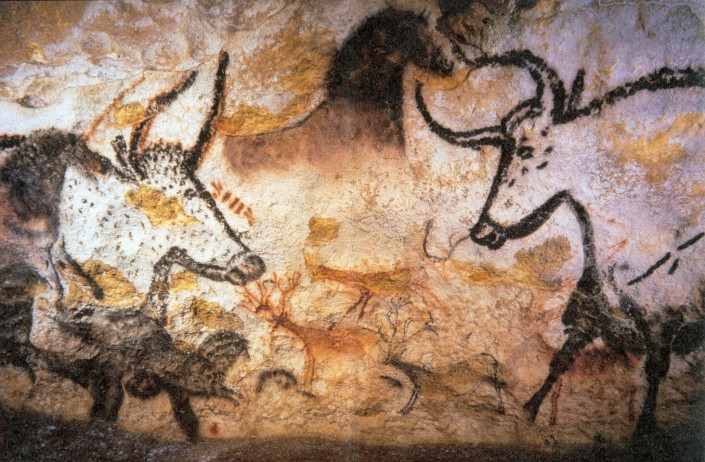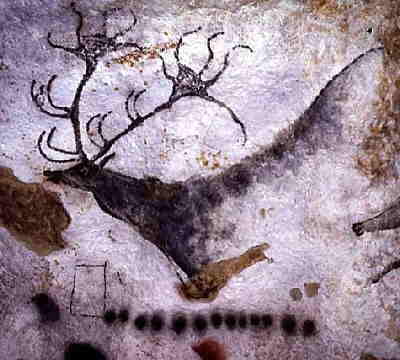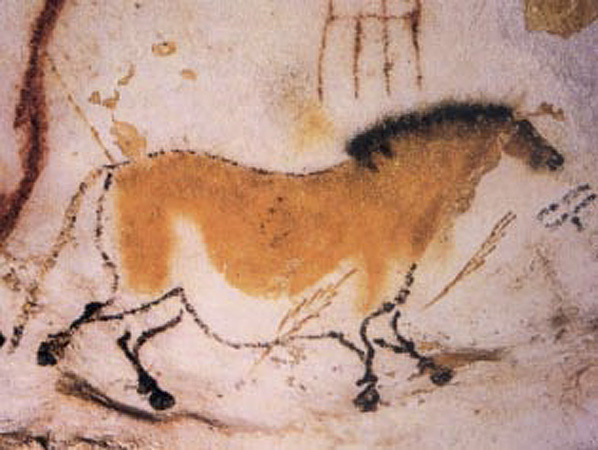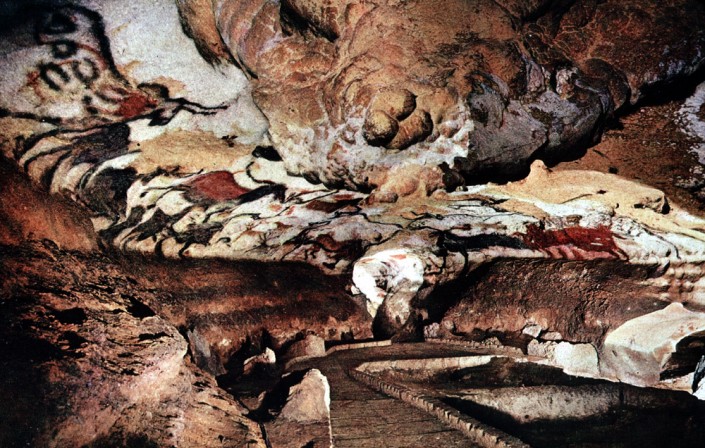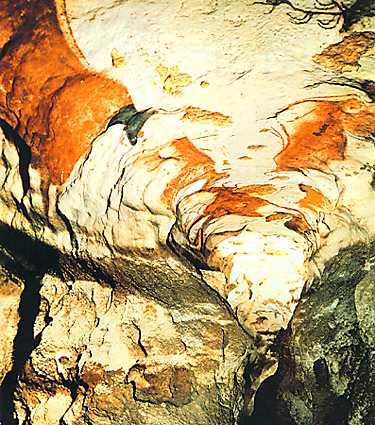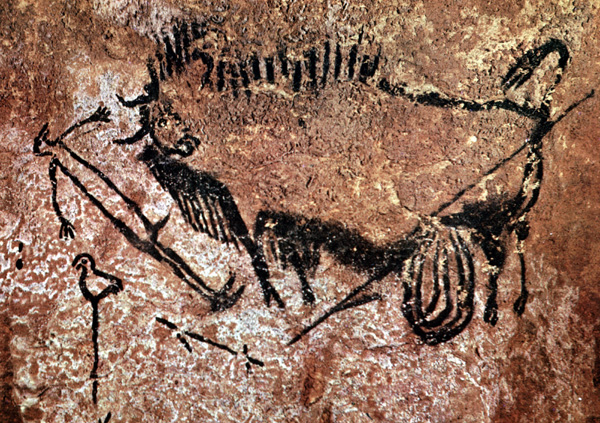Lascaux is the setting of a complex of caves in southwestern France famous for its cave paintings. The original caves are located near the village of Montignac, in the Dordogne département. They contain some of the most well-known Upper Paleolithic art. These paintings are estimated to be 16,000 years old. They primarily consist of realistic images of large animals, most of which are known from fossil evidence to have lived in the area at the time. Lascaux was added to the UNESCO World Heritage Sites list in 1979.
The cave was discovered on 12 September 1940 by four teenagers, Marcel Ravidat, Jacques Marsal, Georges Agnel, and Simon Coencas, as well as Ravidat’s dog, Robot. Public access was made easier after World War II. By 1955, the carbon dioxide produced by 1,200 visitors per day had visibly damaged the paintings. The cave was closed to the public in 1963 in order to preserve the art. After the cave was closed, the paintings were restored to their original state, and are now monitored on a daily basis. Rooms in the cave include The Great Hall of the Bulls, the Lateral Passage, the Shaft of the Dead Man, the Chamber of Engravings, the Painted Gallery, and the Chamber of Felines.
Lascaux II, a replica of two of the cave halls – the Great Hall of the Bulls and the Painted Gallery – was opened in 1983, 200 meters from the original. Reproductions of other Lascaux artwork can be seen at the Centre of Prehistoric Art at Le Thot, France.
The cave contains nearly 2,000 figures. Many are too faint to discern, while others have deteriorated. Over 900 can be identified as animals, and 605 of these have been precisely identified. There are also many geometric figures. Of the animals, horses predominate, with 364 images. There are 90 paintings of stags. Also represented are cattle and bison, each representing 4-5% of the images. A smattering of other images include seven felines, a bird, a bear, a rhinoceros, and a human. Among the most famous images are four huge, black bulls or aurochs in the Hall of the Bulls. There are no images of reindeer, even though that was the principal source of food for the artists.
Looking for accommodation near Lascaux ?
B&B Ferme de Tayac, lovely 12th Century buildings, once monastery and farm. Its one meter thick walls, oak beam structures, and rooms carved out of the rock, make it a wonderful place to stay whilst you explore this fascinating part of the Vezere Valley. Your stay will be enhanced by the friendly hospitality and homely comfort offered by your hosts Suzanne and Mike. You will enjoy the pleasant garden, the refreshing swimming pool, and maybe the occasional five minute stroll into Les Eyzies, famous as the “Prehistoric Capital of the World” It is here that Cro Magnon man our ancestor made it one of the richest and most exciting of archaeological areas.
Ferme de Tayac is just a 25 min. to Lascaux – www.fermedetayac.com


